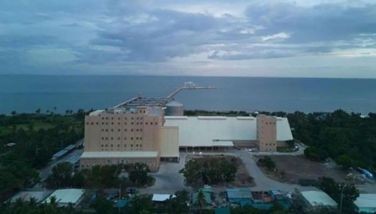More transmission lines up for completion, says NGCP

(As released) MANILA, Philippines – With concerted efforts from the power industry players, Malacanang’s target to achieve 100% total electrification by the end of President Ferdinand “Bongbong” Marcos Jr.’s term under the 2023-2032 National Total Electrification Roadmap (NTER) is within reach.
And the National Grid Corporation of the Philippines (NGCP), for its part, is fully committed to doing its utmost as a strategic partner of the government. Their unwavering dedication ensures that the roadmap is not just a vision on paper but a tangible reality — a lifeline of electricity reaching every home, powering progress, and illuminating the path toward a brighter future for all Filipinos.
The transmission firm has been on a roll since it took over transmission operations from the government in 2009. For 15 years, the NGCP has significantly expanded the country’s transmission network, which reflected the company’s dedication to its mandate of improving and expanding the grid.
These initiatives not only bolstered the country’s power infrastructure, but also underscore the collaborative spirit that drives the nation toward a fully electrified future.
Among these big-ticket projects that are already benefitting Filipino power users are the Mindanao-Visayas Interconnection, the Cebu-Negros-Panay 230kV Interconnection, and the full energization of the Mariveles-Hermosa-San Jose 500kV transmission backbone in Western Luzon that will support the country’s growing energy demands.
“Marami na pong nagawa ang NGCP, at marami pa kaming gagawin para makatulong na maiangat ang ekonomiya ng bansa. Asahan po ninyo na kaisa ng gobyerno, lagi kaming nakahandang tumulong at sumuporta,” NGCP president and CEO Anthony Almeda said.
“Commitment to excellence has always been part of NGCP’s DNA, and we will continue to strive harder, along with the support of our national government, in bringing better service for all Filipinos,” he added.
The Mariveles-Hermosa-San Jose Transmission Line, which was inaugurated by President Marcos last July 12, stands to benefit 59 million Filipino consumers and other power users as the facility further secures and stabilizes the power transmission services in Luzon.
Almeda, however, recognized that total electrification of households in the country, especially in far flung areas, could still be a challenge but that does not deter the NGCP to do more in partnership with the Department of Energy (DOE), the key agency that oversees the implementation of strategies outlined in the NTER.
As of June 2023, the DOE said that approximately 25.3 million households in the Philippines have benefited from the electrification program. This represents a household electrification level of 91.1% out of an estimated potential of 27.7 million households based on the 2020 Census on Population and Housing (CPH).
The DOE added that there are still around 2.5 million unserved households or approximately 10.25 million people that need access to electricity. The government continues to work toward achieving 100% total electrification by 2028 through various strategies, including regular connections, distribution line extensions, standalone home systems, and microgrid systems.
The NGCP chief also said the firm will collaborate closely with the DOE to complete more transmission projects on time, particularly the Batangas-Mindoro interconnection project and the Northern Luzon 230kV loop, as per instruction of President Marcos during his speech at the Mariveles-Hermosa-San Jose Transmission Line inauguration in Bataan.
“Nakahanda ang NGCP na kumilos upang makamit ang target ng pamahalaan na 100% electrification sa pagtatapos ng termino ni Pangulong Marcos,” Almeda assured.
But he also emphasized the need for the construction of additional power plants as part of a broader strategy to ensure a stable and continuous power supply that will sustain the nation's progress and support its burgeoning economy.
Almeda further cited the importance of creating an investor-friendly environment that encourages the inflow of capital into the energy sector and ensures a level playing field.
“While the enhancement of transmission and distribution systems remains a priority, it is clear that these efforts must be complemented by the establishment of new power generation capacities and the creation of a more friendly business environment to make the sector more appealing to investors,” he said.
- Latest




























